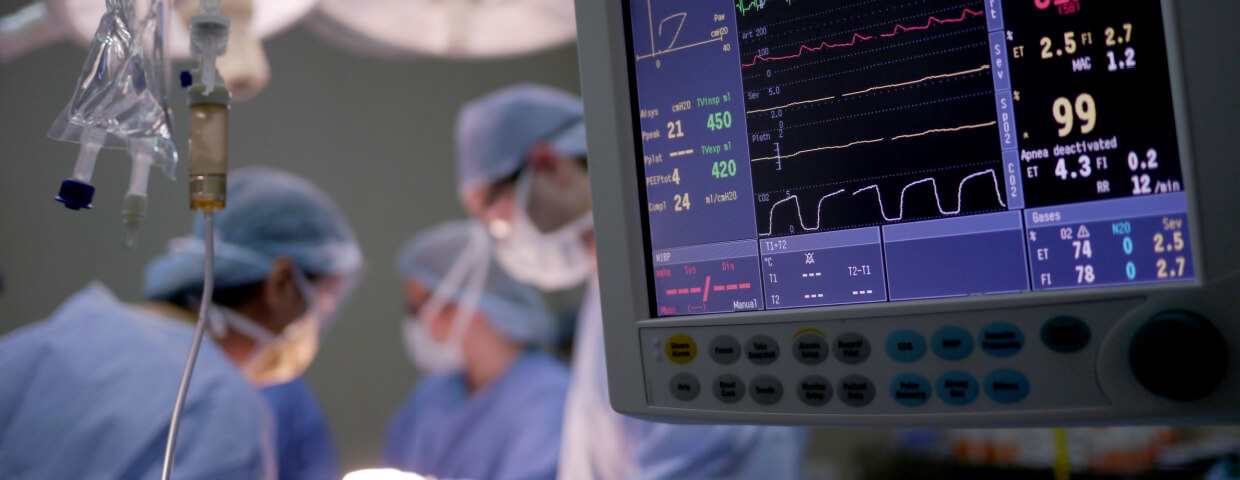
While your doctor is always the best source of information on any upcoming procedure, you likely have questions about what to expect and how your heart surgery (or a loved one's) compares to other surgeries. Here's a look at the different types of heart surgery and the one big thing they share.
Common Types of Heart Surgery
A big part of preparing for surgery is understanding exactly what's going to happen. Although your doctor should explain everything to you (and you should feel free to ask any questions you might have), it's still helpful to do some of your own research.
Here are a few of the most common types of heart surgery and how they compare:
Coronary artery bypass grafting (CABG)
CABG is the most common type of heart surgery. Patients have a blocked coronary artery, so surgeons remove an artery or vein from elsewhere in the body and graft it onto the heart. This gives blood a new, open pathway for travel, effectively "bypassing" the coronary artery.
Limited Access Coronary Artery Surgery
This aptly-named "minimally invasive heart surgery" is also known as Port-Access Coronary Artery Bypass and Minimally Invasive Coronary Artery Bypass Graft. As the titles suggest, it's similar to CABG, but involves smaller incisions.
The surgery begins in much the same way: Patients have a blocked artery and need a bypass. However, in this case, surgeons only make small "ports" in the chest. Then, specialized instruments are passed through the ports, allowing surgeons to see inside the body without creating larger incisions. In this way, the new artery (taken from elsewhere in the body) can be placed, just like CABG.
Angioplasty
Also called Balloon Angioplasty and Coronary Artery Balloon Dilation, this procedure also begins when a patient has a blocked artery. Instead of bypassing the artery as in CABG, surgeons use a kind of deflated balloon, which is threaded through the heart and inflated. The movement helps open narrow arteries, allowing blood to flow more freely. Depending on what other activities are performed, angioplasty sometimes doesn't require incisions, making it a less invasive procedure.
A similar surgery, called laser angioplasty, uses a laser to open the arteries instead of a balloon. An atherectomy does much the same thing, but uses a specialized tool to "shave away" plaque buildup inside the heart.
Pacemaker or implantable cardioverter defibrillator (ICD)
If a patient's heart has an irregular rhythm or beats at the wrong speed, they have arrhythmia. Although medication is the first approach, some patients eventually need surgical intervention. In that case, doctors may insert either a pacemaker or ICD.
A pacemaker is placed in the patient's chest. Wires connect the device to the heart chambers. If the built-in sensor determines an irregular, fast, or slow heartbeat, the device sends electric pulses, helping the heart regain a more natural rhythm. An ICD is a similar device, but instead of pulses, it uses an electric shock.
What Every Heart Surgery Shares
Although these heart surgeries have different steps, are done for different reasons, and may require different lengths of time spent in the hospital, they all have one thing in common: recovery.
Heart surgery recovery doesn't look the same for any two patients. However, no matter what procedure you have or what your post-operation instructions look like, you'll face similar challenges, questions, and needs. Here are a few examples:
- Emotional support: While your focus is likely on physical health, mental and emotional health after heart surgery are equally important. You'll need a solid support system during recovery.
- Wound care: To avoid complications, you need to carefully follow doctor instructions regarding your wound and how to care for it. This generally requires a little help from friends or family.
- Pain management: While you'll likely have prescribed medications, you can also rely on sternum support devices to provide comfort when moving, breathing, and coughing.
Simply put, recovery is a journey all its own--one that's just as important as the heart surgery itself.
In conclusion, there are many types of heart surgery to be aware of. Listen to your doctor's explanation of your surgery, but feel free to ask questions and do research so you understand how your procedure compares to others. And don't forget that recovery is an equally vital consideration.
Contact us today to learn more about heart surgery, recovery, and how Heart Hugger can help.
